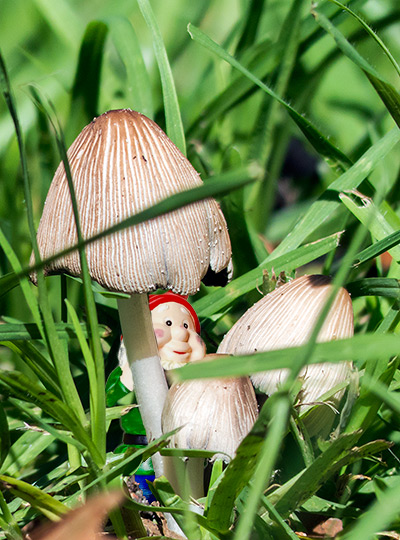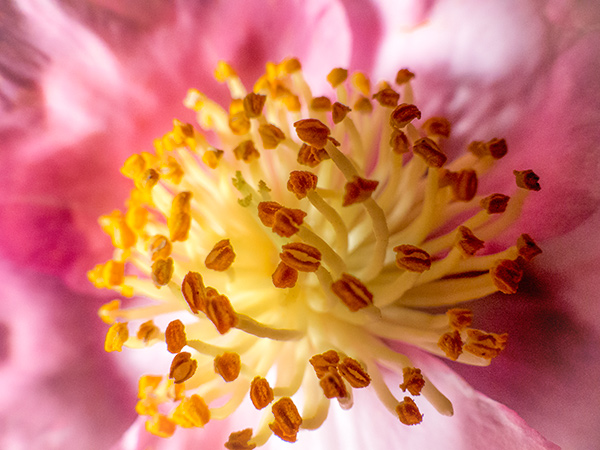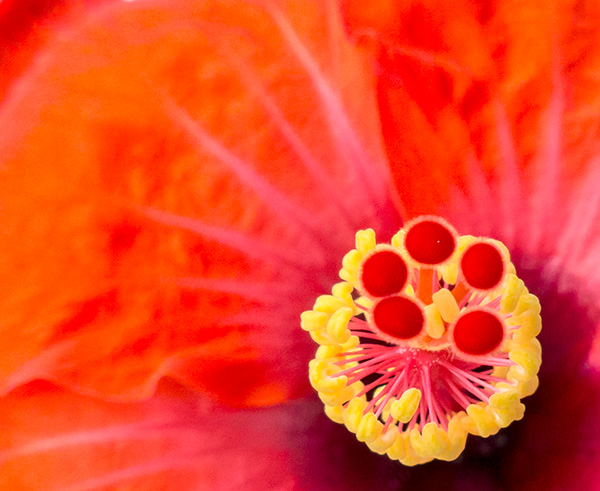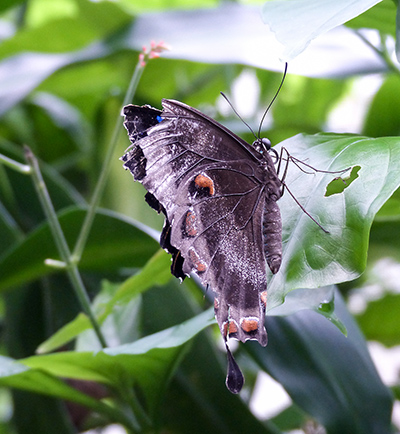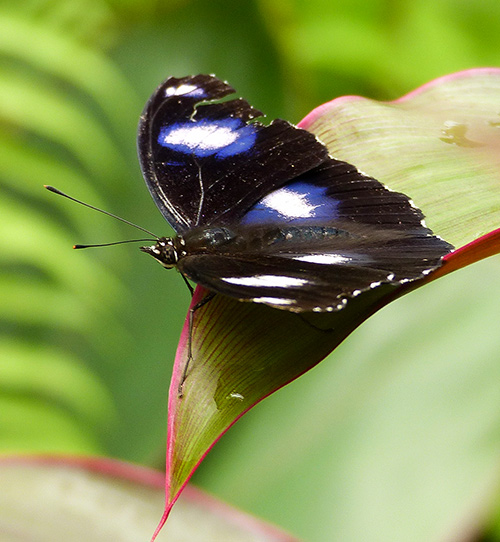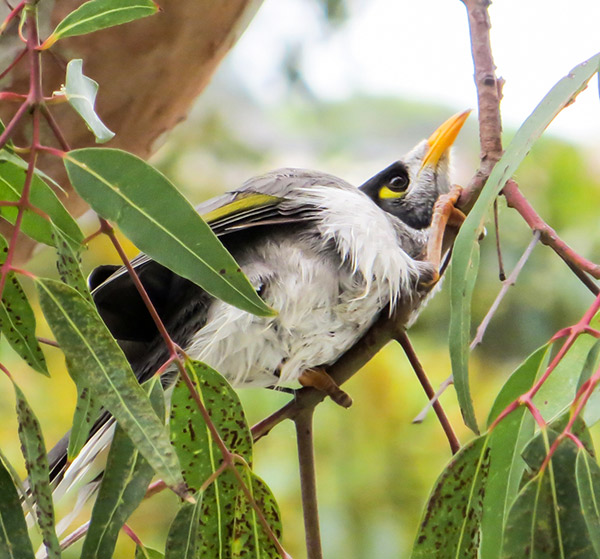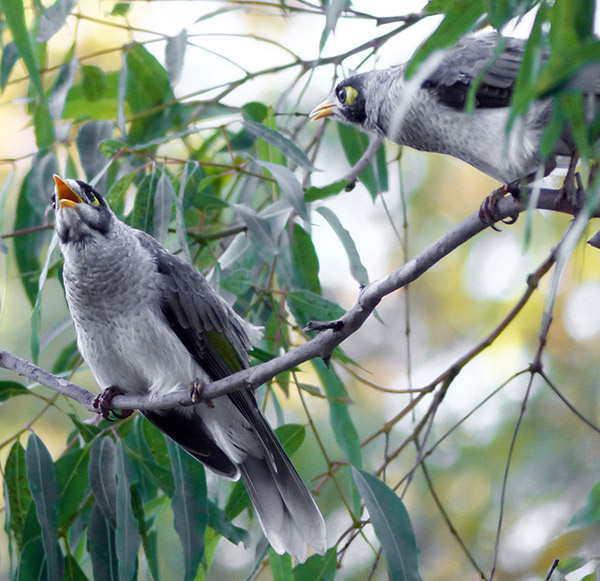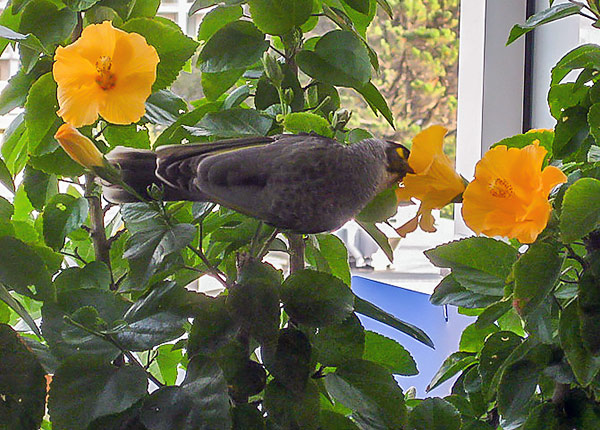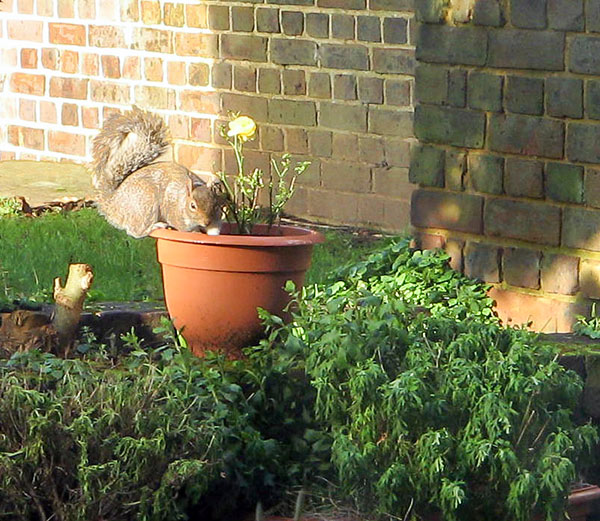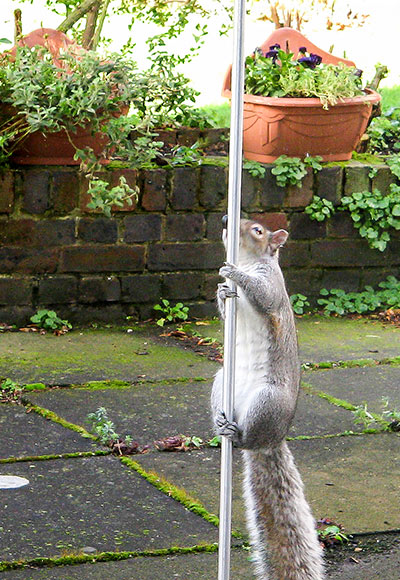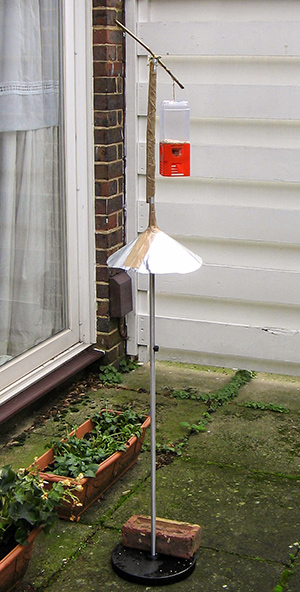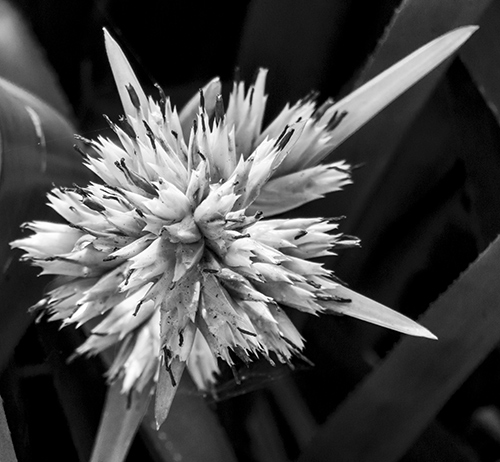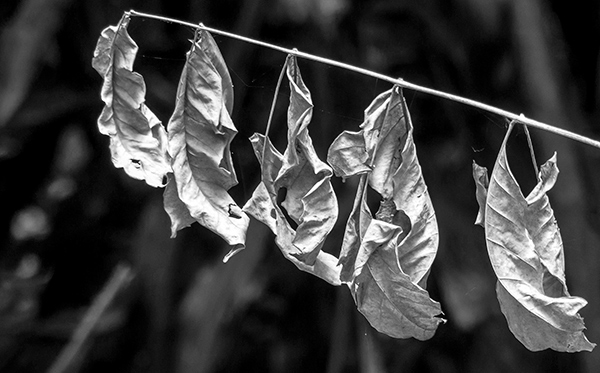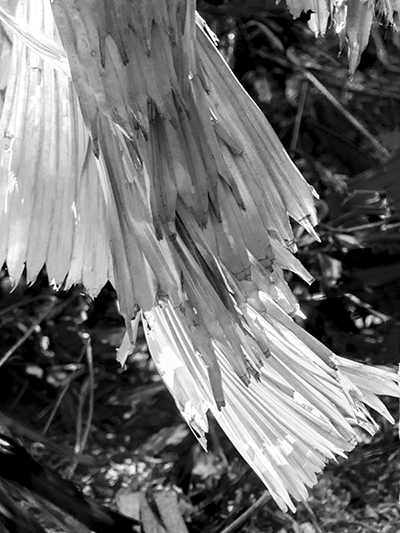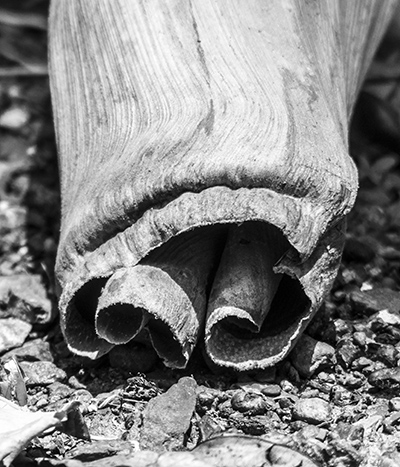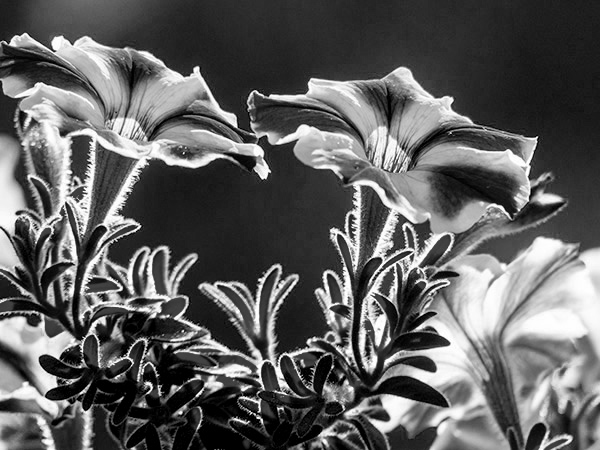
The sunken garden, and exotic spiky palm-type plants in the snow.
I’ve gone with a large interpretation of “garden” for this winter garden post. These photos are of Walpole Park, which is in Ealing Broadway (London). I lived across the road from this 28-acre site for a year or so (not the same place in last week’s snowy patio photos).

Fountain and cherry tree, a sprinkle of snow — and a bench! 😉
According to Wikipedia, “In 1987 Walpole Park was registered by English Heritage on the Register of Parks and Gardens of Special Historic Interest in England. Within its boundaries are the Pitzhanger Manor museum & art gallery and Perceval Lodge. These buildings and part of the boundary wall are also statutory protected structures of Grade I and Grade II respectively. There is also a late Victorian ornamental lake bordering the House’s rear lawn and further west a pond which has a pair of fountains, both of which attract waterfowl. The original house which stood here, and its grounds which make up the present park, was once the property of John Soane the architect, who bought it in 1800. After several more changes of ownership it was purchased by the Urban District Council of Ealing in 1900.”
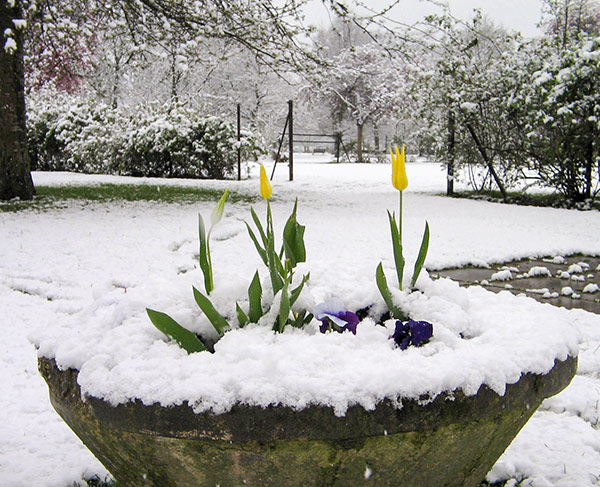
Tulips and pansies in the snow.
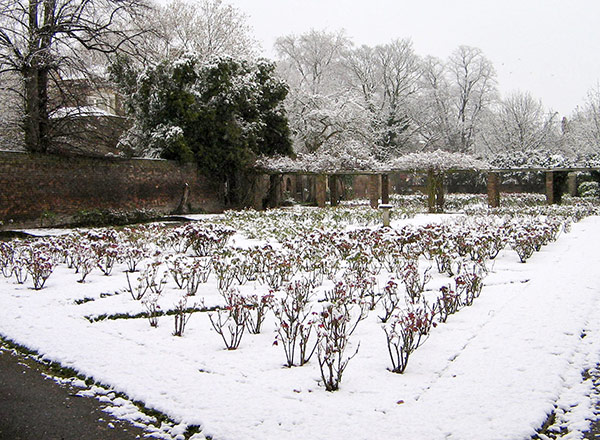
Rose garden in the snow.
“Most of the park consists of open flat grassed areas bordered by tree lined avenues.” (Wikipedia) You can get an idea of those open areas and trees in these next two shots.
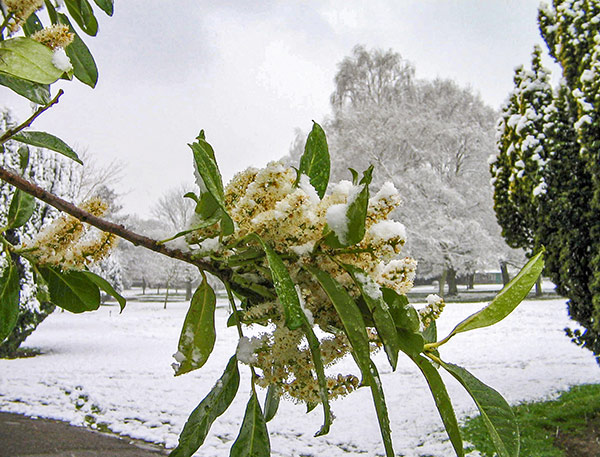
Tree blossom weighed down with snow.
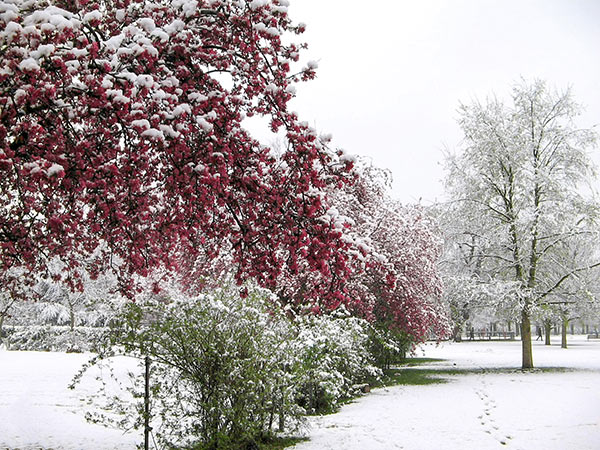
A line of flowering trees dusted with snow.
And I just like the whimsy of this cute little guy with his flower petal buttons, and branches for arms.

Snowman with petal buttons.
“The park was extensively renovated from August 2013 onwards and reopened fully in the summer of 2014.” (Wikipedia) My photos were taken in late winter/early spring 2008, so I’ll have to go back and see how this lovely park and its gardens have changed.

